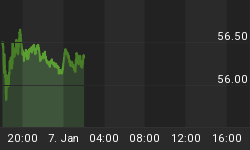In the Pulitzer Prize winning 2009 book, Lords of Finance, Harvard and Cambridge educated Liaquat Ahmed outlines how the world’s central bankers coordinated their aggressive monetary policies to help re-inflate the global economy after World War I. This led to a massive boom in the US during the ‘Roaring’ 1920s, followed by the hyperinflation in Germany and the Great Depression in the 1930s, and finally World War II.
Think about that. The central banks did their best to manage the global economy and ended up blowing it up, which led to authoritarian governments, global depression and a war that led to 56 million deaths.
We are now in an era of unprecedented monetary policy. The world’s central bankers have coordinated to give us negative interest rates (‘buy a government bond and we’ll give you less money than you invested when it matures!’), endless bouts of quantitative easing and enabled unprecedented levels of government debt.
The 2008 global financial crisis was a corporate and consumer debt crisis (something that the Acamar Journal had consistently predicted before it happened). Total global debt in Q4 2007 was $ 142 trillion. McKenzie estimates that it is now $ 215 trillion, up 50% in just 8 years! Global GDP has risen just 17% over these 8 years.
China is particularly vulnerable, as its total debt has gone from $ 10 trillion to $ 30 trillion during this period. Moody’s recently downgraded China’s credit ratings for the first time in 30 years, due to its excessive debt levels.
We are truly down the rabbit hole. Economic reality has been suspended and it is the central banks that drive markets, not long term rational behaviour by the free market. The global GDP growth rate in 2006 was 5.5%; in 2016 it was an anemic 3.1% while US Q1 GDP growth was just 0.78%.
In Canada, a survey by Manulife bank reveals that 74% of Canadian homeowners would have difficulty meeting their mortgage payments if those payments increased by as little as 10%. And we are now in a rising interest rate environment…..
In the US, a 2016 survey by the Federal Reserve found that 44% of Americans did not have the cash available to pay just $ 400 in an emergency. They would either have to charge it on a credit card, borrow the money, sell something to come up with the cash or simply be unable to meet the expense.
The unemployment rate in Spain is still 18% and is 23% in Greece. This is the new normal.
All this cheap and abundant money has gone into global stock markets and real estate, inflating prices well beyond what economic fundamentals can justify. This has fuelled speculative behaviour and created the conditions for a massive crash.
The ratio of median price to revenue for the S&P 500 is now at its highest level in history.

And here is how this global housing bubble looks.

The lessons from 2008 have not been heeded and the central banks have not only doubled down, they are all-in. This means that, with every sign of trouble, they will throw unprecedented sums of money at it, created out of thin air. Japan is not only the largest buyer of domestic bonds, it has become a major purchaser of Japanese equities, to prop up its markets.
Printing copious of money far in excess of economic growth has never created genuine prosperity throughout history; it has lead to the collapse of many countries and empires. We are the walking dead now, where things seem normal on a day to day basis, but the reality is that we are economic zombies, sustained by debt we can’t afford. Global debt is now on a scale where it will never be repaid.
And the Fed has both started raising interest rates and is threatening to reverse QE later this year. The markets will continue to ignore this warning, until the music stops.
By Fayyaz Alimohammed via Acamarjournal.com















